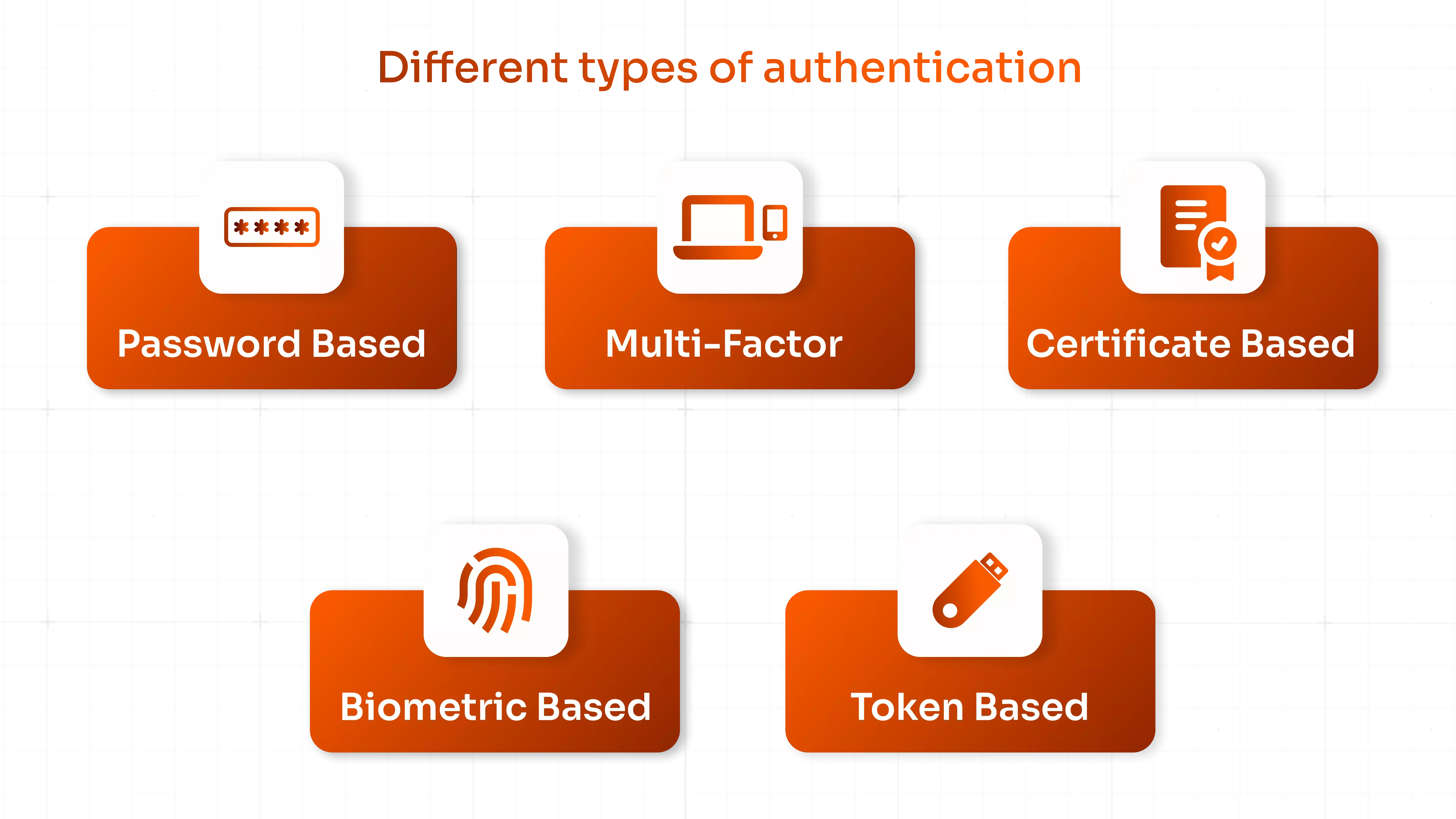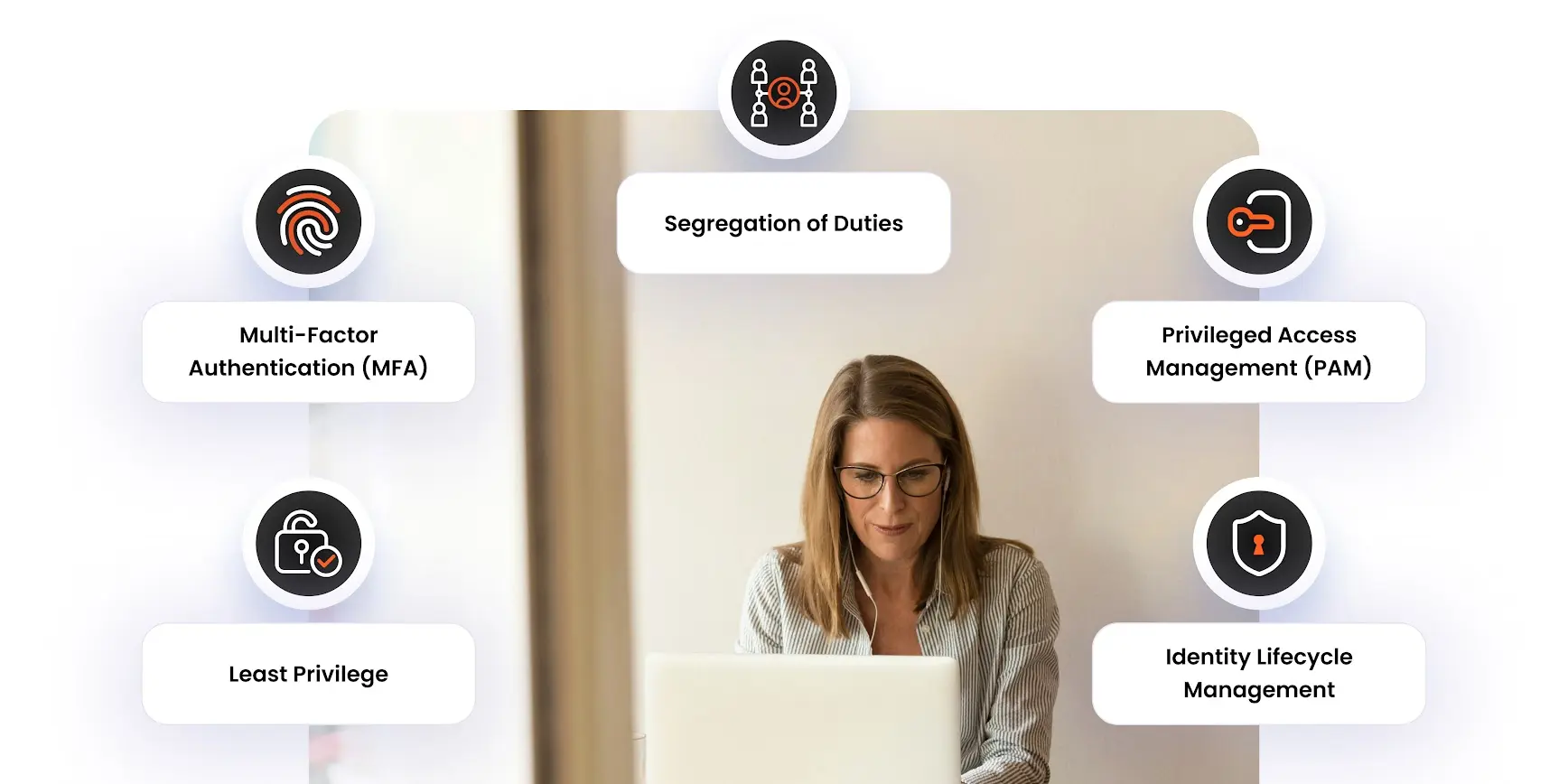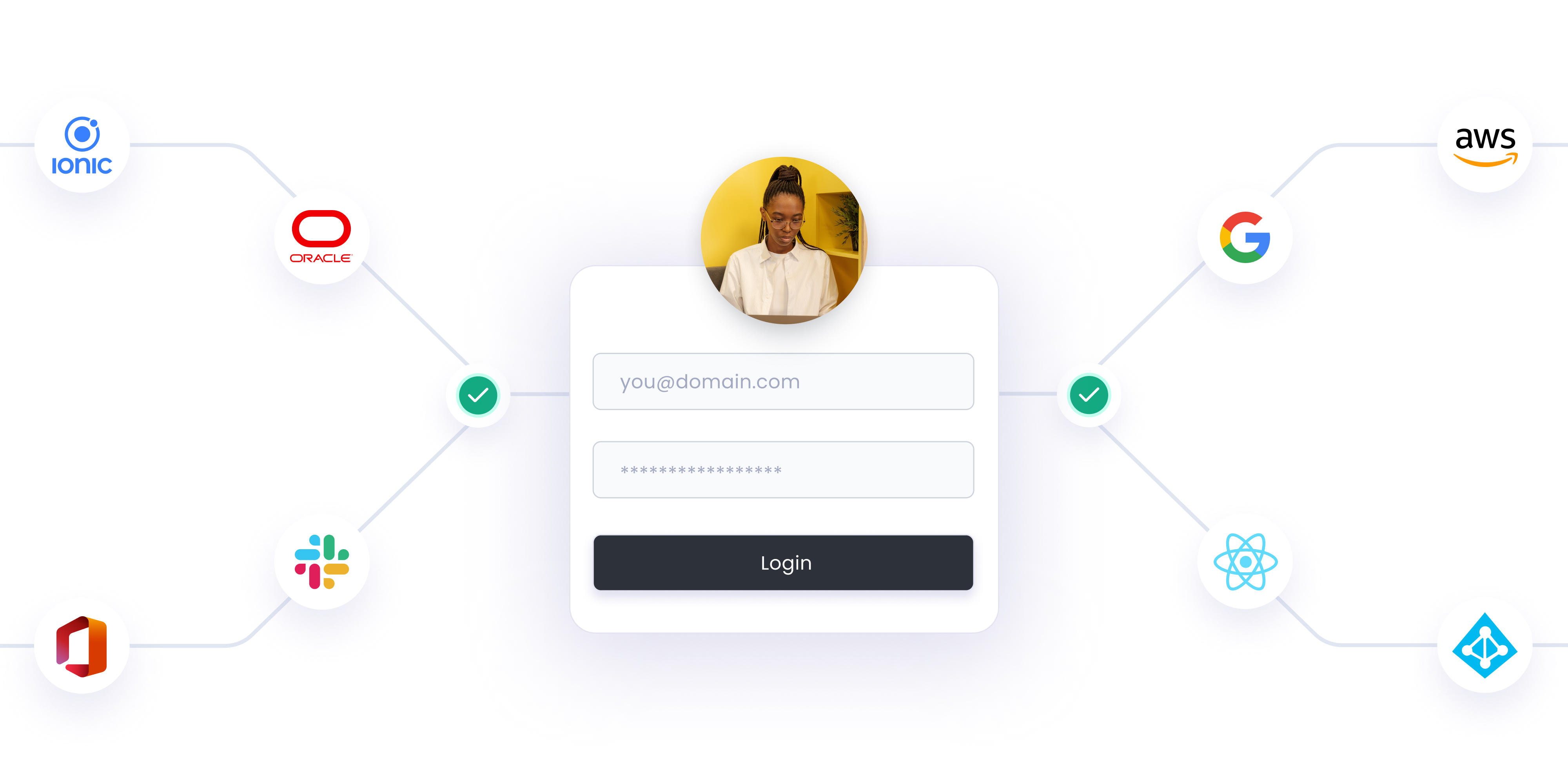When the word “technology” is used, the phrase “authentication and security” immediately comes to mind. Authentication becomes the first baby step in improving security, given the growing requirement for it. The basic job of authentication is to manage user identification and provide them with suitable access control for seamless operation and security. Individual authentication does not have to be restricted to usernames and passwords. Single Sign-On (SSO), Multi-Factor Authentication (MFA), Provisioning, Adaptive Authentication, and other Identity and Access Management (IAM) tools augment the capabilities of standard authentication.
What Is Authentication?
Authentication is the process of identifying users that request access to a system, network, server, app, website, or device. The primary goal of authentication is to ensure that a user is who they claim to be. User A, for example, has access to only relevant information and is unable to see User B’s personal information. Unauthorized users are prevented from accessing sensitive data with user authentication. Authentication improves security by allowing any Organizational admin to manage an individual user’s identity and access. The basic authentication used for identity and access control verification is username and password, with different types of authentication techniques that we shall cover moving forward.
Why Is User Authentication Important?
There is no organization, system, network, website, or server in today’s modern world that does not require some form of authentication. If they are not, they are putting themselves at risk of attacks that could result in the misappropriation of their resources and sensitive data at the very least. A single blunder may expose your organization’s data to cybercriminals, as they are always prepared with a variety of cyber weaponry, such as (Phishing, Data breaches, spoofing, etc). When your authentication system isn’t up to par, they can quickly get access and steal information. A few of the most recent major attacks will lead you to the conclusion that, whether you are a little business or a large corporation, authentication using the finest security techniques is a must to stay stable in this technological environment.
Different types of Authentication
When it comes to authentication and security, there is a vast ocean of different authentication options to choose from. Before adopting or choosing any of the authentication methods for your Organization’s employees or end-users, you should be aware of a few key factors that will help you choose the most appropriate authentication technique for you:
- Security capability of that Authentication Method
- Usability interface Let’s take a closer look at the many sorts of authentication techniques available:
1. Password Based Login:
The most commonly utilized regular login authentication system that you will employ on a daily basis while utilizing an online service is password-based login. You need to input a combination of your username/mobile number and a password when using the Password-Based Authentication technique. The individual is authorized only when both of these elements have been verified. However, because today’s customers use multiple online services (apps and websites), it’s tough to keep track of all of their usernames and passwords. As a result of this, end-users engage in unethical behaviors such as forgetting passwords, using the same password for several services, and so on. Cybercriminals enter at this point and begin actions such as phishing, data breaches, and so on. That is the fundamental reason why standard password-based authentication is losing favor and more organizations are turning to advanced additional security authentication factors.
2. Multi-Factor Authentication:
Multi-Factor Authentication (MFA) is an authentication method in which an individual must pass multiple factors in order to gain access to a service or network. It’s an extra layer of security on top of the standard password-based login. Individuals must also submit a second factor in the form of a one-time code that they will receive through phone or email in addition to their Username and Password.
You may quickly configure several Multi-Factor Authentication (MFA) methods to give an extra layer of security to your resources. OTP/TOTP via SMS, OTP/TOTP over Email, Push notification, Hardware Token, and Mobile Authenticator are all examples of MFA methods (Google, Microsoft, Authy, etc). You can choose any of the MFA techniques and implement them for organizational security based on your needs and requirements. After traditional password-based login, Multi-Factor Authentication is the most trusted authentication mechanism. For improved security, password-based traditional authentication and Multi-Factor Authentication methods are usually used simultaneously.
3. Biometric Authentication:
Individual physical attributes such as fingerprints, palms, retinas, voice, face, and voice recognition are used in biometric authentication. Biometric authentication works in the following way: first, the physical characteristics of individuals are saved in a database. Individuals’ physical features are checked against the data contained in the database whenever a user wants to access any device or physically enter any premises (Organization, School, Colleges, Workplace). Biometric authentication technology is mostly employed by private organizations, airports, and border crossing points where security is a top priority. Because of its capacity to create a high level of security and a user-friendly frictionless flow, biometrics is one of the most often used security technologies. Among the most common biometric authentication methods are:
1. Fingerprint: To enable access, fingerprint authentication matches the unique pattern of an individual’s print. In some advanced Fingerprint authentication systems, the vascular structure of the finger is also sensed. Because it is one of the most user-friendly and accurate biometric systems, fingerprint authentication is currently the most common biometric technology for ordinary customers. Biometrics’ popularity can be due to the fact that you use your mobile phones with fingerprints on a regular basis, as well as companies or institutions that use Fingerprint authentication.
2. Retina & Iris: Scanners shine a strong light into the eye and look for distinctive patterns in the colorful ring around the pupil of the eye in this biometric. After that, the scanned pattern is compared to data recorded in a database. When a person wears spectacles or contact lenses, eye-based authentication can be inaccurate.
3. Facial: In facial authentication, multiple aspects of an individual’s face are scanned while they try to get access to a certain resource. When comparing faces from different angles or persons that look similar, such as family members, face recognition results can be inconsistent.
4. Voice Recognition: Your voice tone is stored with a standardized secret code in the same way that the above-mentioned approach does. A check occurs because you must speak off each time you want access.
4. Certificate-based authentication:
Certificate-based authentication identifies people, servers, workstations, and devices by using an electronic digital identity. In our daily lives, a digital certificate functions similarly to a driver’s license or a passport. A certificate is made up of a user’s digital identity, which contains a public key and a certification authority’s digital signature. This certificate verifies that the public key and the person who issued the certificate are both the same person. When a user attempts to log in to a server, they must first present their digital certificate. The server checks the digital certificate’s identity and credibility by confirming that the user has a correctly associated private key with the certificate using cryptography.
5. Token-Based Authentication:
Token-Based Authentication allows users to enter their credentials only once and obtain a one-of-a-kind encrypted string exchange in return. After that, you won’t have to input your credentials every time you want to log in or acquire access. The digital token ensures that you have already been granted access. Most use cases, such as Restful APIs that are accessed by many frameworks and clients, require token-based authentication.
How will miniOrange advance Authentication technologies will help you out?
As we get to know more about different types of Authentication, we will move forward with some advanced Authentication Solutions that miniOrange provides with “All in one Approach”. It will help you to Manage Identities and access both with advanced security features.
Single Sign-On Authentication (SSO):
Single Sign-On is a subset of basic username-password-based Authentication. Going with SSO authentication will provide advanced security and multiple features with frictionless experience to your end-users. Single Sign-On as the name depicts allows individuals to enter their username and password once and get access to all configured applications. Simply stating you will have the provision to configure “N no apps” with miniOrange and you can set a single password for all these apps. With this, you don’t need to remember multiple passwords for different applications and you just need to login once and you will automatically get access to all applications. The benefit for this will include – As users need to remember just a single password they will not forget it or write it on any sticky notes type of stuff. Access to multiple applications will become easier which will improve efficiency and boost productivity. From the admin end, they will receive fewer support calls for password resets and login issues.
2nd Factor Authentication (Two-Factor Authentication):
As the name implies, “two-factor authentication” requires an individual to pass two separate authentication procedures in order to gain access to a certain resource.Consider the following scenario: you have a website/app/group of applications and you want to add more protection to it to prevent current cyber assaults such as data breaches, phishing, or the use of key loggers. With miniOrange, you can configure any app/website built on any platform and enable 2FA for that application. One Time Passwords (OTP through SMS/ Email), Push Notifications, Biometrics, Authenticators (Google Microsoft,Authy), Yubikey and Hardware Token, and more 2FA options are available from miniOrange.According to one of the most recent security surveys, 2FA can prevent 80% of data breaches.
Adaptive Authentication:
Adaptive Authentication is a type of authentication that adapts to the circumstances.” Adaptive Authentication,” a more advanced kind of 2FA/MFA authentication, is introduced. You can authenticate users depending on their “IP, Device, Location, Device, and Time of Access” in this section. If IP and Location-based authentication are enabled, after entering the username and password, Adaptive Authentication will check if the user’s IP is the same as the one used by the administrator and whether he is in the location to which he has been assigned. If he does not comply, he will be denied access to the resources. This is one of the most advanced authentication methods used by businesses to ensure their security.
API Authentication:
Now-a-days, API has become a popular model because it handles large volumes of data and is a new dimension to the online security world. There are many API authentication methods, the most popular of them are HTTP Basic Auth, API keys, OAuth.
HTTP Basic Authentication:
To prove their authenticity, a user agent just offers a username and password. Because it believes in the HTTP header itself, this solution does not require cookies, session IDs, or login pages.
API Passwords:
An API key is a unique identifier for web service requests that identifies their source (or similar types of requests).When a user attempts to get allowed access to a system for the first time through registration, a key is produced.Following that, the API key is paired with a secret token and is submitted with subsequent queries.When a user tries to re-enter the system, their unique key is used to verify that they are the same person who used the system previously.
OAuth:
OAuth is a popular API authentication technique that allows for both authentication and authorization.OAuth allows the API to authenticate and access the system or resource requested by establishing scope.
Conclusion
In today’s fast-paced technology environment, security is the most crucial component in standing out from your competitors and providing a flawless experience to end consumers.
Putting your security at risk can have a number of negative effects on your company, such as phishing attacks and data breaches. To avoid problems like these, you should choose an authentication system for your company that fits your budget and allows for a smooth user flow.
As an experienced IAM solution supplier, miniOrange can assist you in determining the most reliable authentication option for your organizational structure. If you have any questions about the authentication procedure, you can contact info@xecurify.com.
Author





Leave a Comment